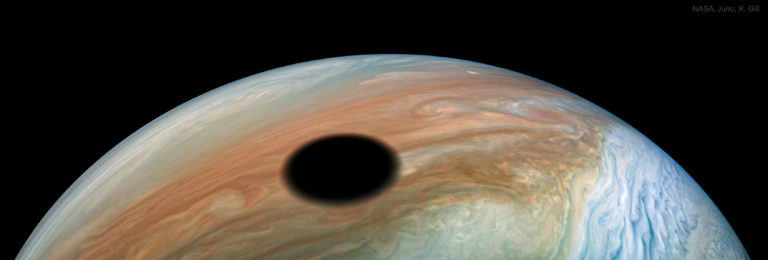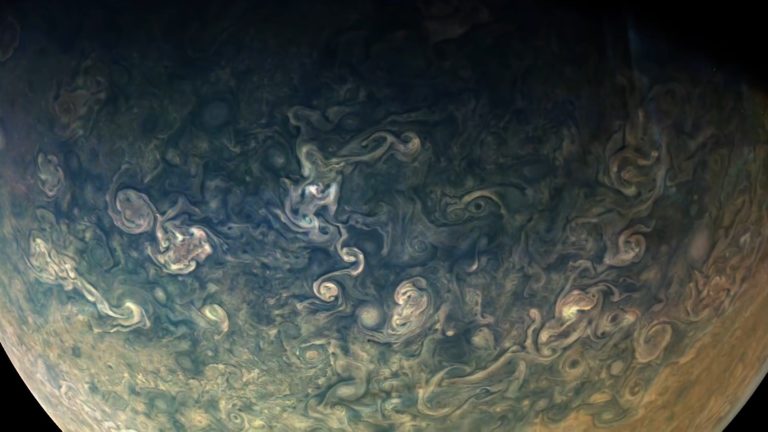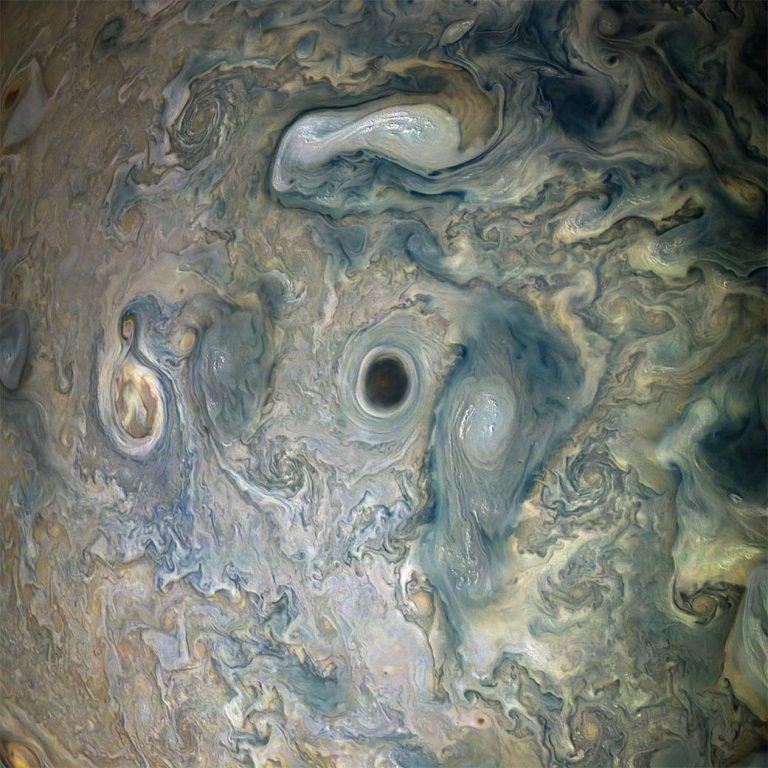朱诺探测到的木星磁场
2020 February 25 Jupiter’s Magnetic Field from Juno Video Credit: NASA, JPL-Caltech, Harvard U., K. Moore et al. Explanation: How similar is Jupiter’s magnetic field to Earth’s? NASA’s robotic Juno spacecraft has found that Jupiter’s magnetic field is surprisingly complex, so that the Jovian world does not have single magnetic poles like our Earth. A snapshot of Jupiter’s magnetic field at one moment in time, as animated from Juno data, appears in the featured video. Red and blue colors depict cloud-top regions of strong positive (south) and negative (north) magnetic fields, respectively. Surrounding the planet are imagined lines of constant magnetic field strength. The first sequence of the animated video starts off by showing what appears to be a relatively normal dipole field, but soon…










